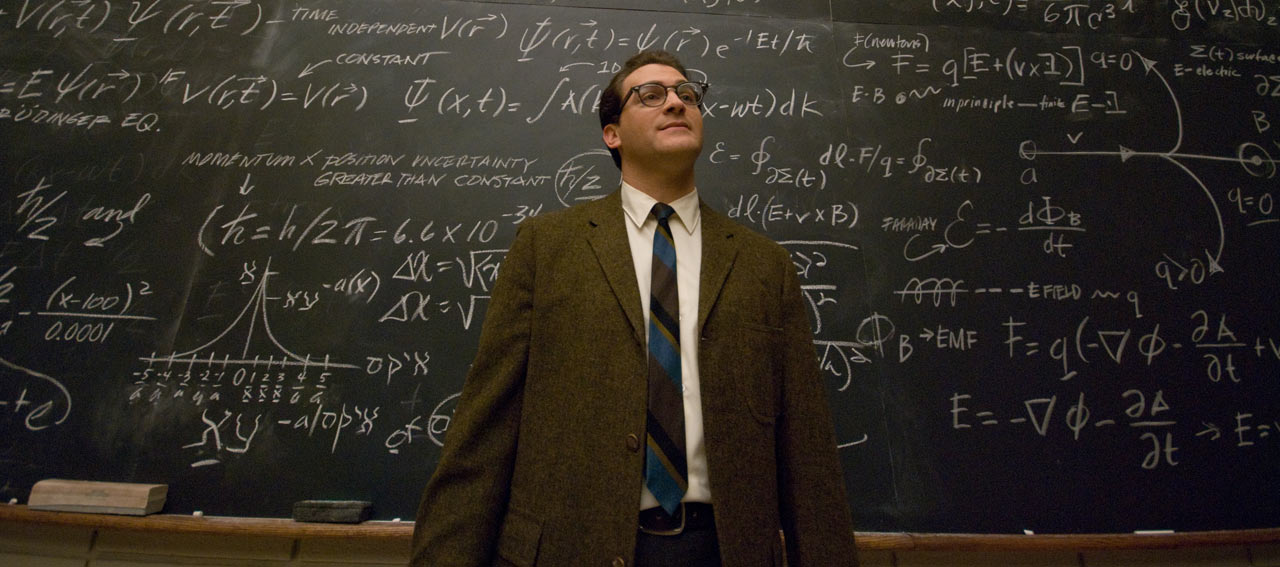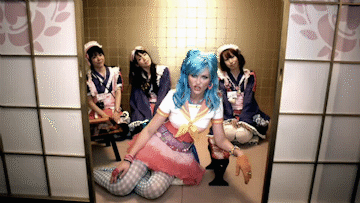Silent Light
 Silent Light, an unhurried, largely unmodulated story of faith and unfaithfulness in a Mexican Mennonite farming community, is fundamentally a study in opposites. Light and dark are considered in the images that bookend the film, twin tracking shots that depict, in time-lapse, gorgeous sunrise and sunset. So perfectly are these moments captured and compressed, despite the tricky decision to move the camera as they transpire, that the technical facility of director Carlos Reygadas and his crew, including cinematographer Alexis Zabé, is never in doubt. The pictures they gather, which find deep colors and a pregnancy of feeling in simple landscapes, stormy skies, and shadowy figures seen through windows and doorways, express meaning as the narrative progresses deliberately through its paces.
Silent Light, an unhurried, largely unmodulated story of faith and unfaithfulness in a Mexican Mennonite farming community, is fundamentally a study in opposites. Light and dark are considered in the images that bookend the film, twin tracking shots that depict, in time-lapse, gorgeous sunrise and sunset. So perfectly are these moments captured and compressed, despite the tricky decision to move the camera as they transpire, that the technical facility of director Carlos Reygadas and his crew, including cinematographer Alexis Zabé, is never in doubt. The pictures they gather, which find deep colors and a pregnancy of feeling in simple landscapes, stormy skies, and shadowy figures seen through windows and doorways, express meaning as the narrative progresses deliberately through its paces.
As is his wont, Reygadas has assembled a team of non-actors to perform the story. Not only have the performers not been trained as actors, but they also seem to have been instructed barely to act at all. This is partial insurance against bad performances, of course, but the results can also be maddening — when husband and father Johan (Cornelio Wall Fehr) announces, first to his mechanic and later to his own father, that he has fallen in love with another woman, the lack of expression on the others' faces feels odd. But the overall feeling of impassivity, of an austerity of emotion, matches well with the Mennonite community setting. In this reserved, family-centric milieu, Johan's casual declaration of adultery is shocking mainly for the lack of shame or self-awareness that he seems to feel. And that points to another duality Reygadas is looking at — the gap between the sacred and the profane. "What's happening to you is the work of the enemy," his father warns him, which I took as a reference to the devil. In fact, Johan declares in response, he believes his feelings for the other woman are a gift from God.
The scene between father and son follows a remarkable long sequence that begins with a long walk through grass and flowers — a moving image recalling Terence Malick — leading to Johan's first on-screen meeting with Marianne (Maria Pankratz). They kiss at some length, and Reygadas frames the shot in a way that the sunlight blasting in from camera right creates multi-colored anamorphic flares in the lens that hang in the screen space in front of the two backlit lovers. Is it presuming too much to say that the effect of this visual flourish is to extend the imagery toward the audience by allowing some of the photography to occur inside the barrel of the camera lens itself, closer to the celluloid eye? Perhaps, but Reygadas allows Zabé to employ a number of camera tricks that draw attention to cinema's status as artifice, rather than a window upon the world. When Johan arrives at Zacarias' garage, for instance, the camera tracks in slowly on a shot where all that is visible in the garage is a piece of green John Deere farming equipment that hangs out in the sunlight. The details of what's going on inside are hidden in the dimmest reaches of shadow. It's only when the camera has entered the garage, slivers of sunlight disappearing off the left and right edges of the picture, that the camera stops down and reveals the three men working in a pit beneath floor level.
That shot is echoed in another slow tracking move that occurs immediately after the first meeting between Johan and Marianne. This time the camera is moving toward a stone building with three open, vertical doorways. Inside the middle doorway — again, so dimly lit as to barely register in the shadow — we can just make out Johan's naked body as he washes in solitude, presumably cleansing himself of the smells of sex. That's followed immediately by a long scene in which Johan's entire family bathes in a local pond. The implication of this, I think, is to show that Johan has separated himself subtly but decisively from the people he lives with. Unlike the rest of his family, he's not out there to clean his body — he's already done that by himself. But, as the family patriarch, he's going through the motions. As the scene ends, and Johan's wife Esther (Miriam Toews) is washing young Autghe's feet — a gesture that will be repeated late in the film, to fairly devastating effect — Johan offers a clumsy compliment on her soap-making skills. She begins to weep, and Johan takes her swimming, as if he can wash away her tears as easily as he can wash the evidence of his infidelity off his own body. (The shot ends after the two have disappeared from the frame, and the camera, ever so slowly, finds its focus on a fragile-looking pink flower.) And in the next scene, on the drive home, Johan can be seen — faintly, only in between passing shadows — weeping, too.
Despite the recurrent tears, which no doubt represent the director's efforts to position him as a decent man, Johan does not come off especially well. Let's say it's not abundantly clear what reason a man has to weep after he has positioned himself, rather selfishly, to enjoy the best of two worlds to the detriment of both. A scene that follows a mid-day tryst between Johan and Marianne shows how cruelly and decisively she is cut off from more fulfilling parts of his life. "Poor Esther," she says at one point, demonstrating her mixed feelings about the affair that obviously brings her pleasure. Later on, Esther curses the woman in certain terms —- "Damn whore!" — before relenting and expressing sympathy with the woman, murmuring "Poor Marianne." What becomes clear only during the film's long final act is that it's not really a story about Johan at all, but rather about the two woman who understand, pity, and forgive one another for the pain he has brought into their lives.
 The final contrasting pair in Silent Light is life and death. As Johan drives through a furious rainstorm, the stoic Esther finally opens up like the heavens, complaining of her spiritual malaise — dealing with Johan's betrayal, she no longer feels a piece of the physical world or a party to its considerable beauty. "Just being next to you was the pure feeling of being alive," she says. "I was part of the world. Now, I am separated from it." Johan responds by saying he feels the same way, and Esther fails to immediately shoot him the withering glare he deserves. It's a devastating moment — the first time anybody here has made an unreserved declaration of their emotions, and also the film's most stirring approach to conventional dramaturgy — and Esther's words resonate throughout the rest of the film. The director's strategy of using doors and windows as key compositional elements starts to carry additional freight, as those structural divisions inevitably suggest the difference between those two states of being — existing in tandem with the rest of the world, or separate from it.
The final contrasting pair in Silent Light is life and death. As Johan drives through a furious rainstorm, the stoic Esther finally opens up like the heavens, complaining of her spiritual malaise — dealing with Johan's betrayal, she no longer feels a piece of the physical world or a party to its considerable beauty. "Just being next to you was the pure feeling of being alive," she says. "I was part of the world. Now, I am separated from it." Johan responds by saying he feels the same way, and Esther fails to immediately shoot him the withering glare he deserves. It's a devastating moment — the first time anybody here has made an unreserved declaration of their emotions, and also the film's most stirring approach to conventional dramaturgy — and Esther's words resonate throughout the rest of the film. The director's strategy of using doors and windows as key compositional elements starts to carry additional freight, as those structural divisions inevitably suggest the difference between those two states of being — existing in tandem with the rest of the world, or separate from it.
What happens next is a combination of tragedy and miracle that extends the boundaries of the story into rarefied cinematic territory. Near the end of the film, there's a moment when Marianne raises one hand, apparently to shield her eyes from the sun by creating a shadow that's cast across her face. But Reygadas cuts immediately to a point-of-view shot that shows her hand silhouetted against the sky, and it almost looks like she's reaching up to touch the sun, perhaps to draw strength or wisdom from its light. What kind of figure is she, anyway? This is left ambiguous. But whatever Marianne's status in this cinematic world, it's appropriate that she would pay attention to the sun. I can't think of another film — maybe Days of Heaven? — in which the quality of light plays so important a role. In the press kit, the actors talk of waiting around with the film crew for hours or even days, as Toews puts it, "for the perfect skies to appear." Reygadas understands that one advantage of his predilection for long takes is that they can convey, in opposition to traditional film-editing tactics, those mysterious qualities that characterize the passage of time in human experience. For instance, a long single shot at the end of the film depicting Esther's face in close-up is enhanced by the way the natural sunbeam streaming into the frame transforms the look and color of her cheek, across which a solitary tear has fallen, glistening with the subtly moving light as clouds pass by outside.
It's a virtuoso moment in a movie teeming with them, and it's followed closely by another series of landscape shots. In one of these, the moving camera again picks up dramatic lines of anamorphic-lens flares, but Reygadas doesn't avoid them. Instead, they swing across the frame in a three-dimensional arc that suggests not only the light from the sun, but the light streaming out of the cinema projector, as well as the light reflecting back at the audience. (Do see this in a theater if you can; a DVD transfer should be watchable, but it will do a poor job of rendering the low-light cinematography with the subtlety that it deserves.) And any cinephile will recognize the spiritual echoes of Bergman and Dreyer, not just generally in Reygadas's subjects, but specifically in his mise en scène. The feeling thus imparted is ineffable but definite — a cinematic commingling of the human and the divine that allows for the possibility of finding within the former a great and miraculous capacity for the latter. Even with the coming of a slow darkness, during the stunning sunset that closes the film, that sense does not vanish completely. Not just in its somber gravity, but in its optimism, Silent Light is a stunner.
Silent Light opens Wednesday, January 7, at Film Forum in New York City for a two-week engagement.
Posted by on January 3, 2024 5:44 PMGet Silent Light on Blu-ray pr DVD from Amazon.com
 Silent Light" title="Still from
Silent Light" title="Still from 

